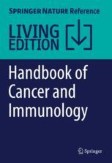Search
Search Results
-
FKBP51-Hsp90 Interaction-Deficient Mice Exhibit Altered Endocrine Stress Response and Sex Differences Under High-Fat Diet
FK506-binding protein 51 kDa (FKBP51), encoded by Fkbp5 gene, gained considerable attention as an important regulator of several aspects of human...

-
FKBP51 mediates resilience to inflammation-induced anxiety through regulation of glutamic acid decarboxylase 65 expression in mouse hippocampus
BackgroundInflammation is a potential risk factor of mental disturbance. FKBP5 that encodes FK506-binding protein 51 (FKBP51), a negative...

-
SAFit2 reduces neuroinflammation and ameliorates nerve injury-induced neuropathic pain
BackgroundNeuropathic pain is experienced worldwide by patients suffering from nerve injuries, infectious or metabolic diseases or chemotherapy....

-
Restoration of HMGCS2-mediated ketogenesis alleviates tacrolimus-induced hepatic lipid metabolism disorder
Tacrolimus, one of the macrolide calcineurin inhibitors, is the most frequently used immunosuppressant after transplantation. Long-term...

-
Alternative macrophage polarisation associated with resistance to anti-PD1 blockade is possibly supported by the splicing of FKBP51 immunophilin in melanoma patients
BackgroundFKBP51 immunophilin is abundantly expressed by immune cells. Co-inhibitory immune receptor signalling generates the splicing isoform...

-
SAFit2 ameliorates paclitaxel-induced neuropathic pain by reducing spinal gliosis and elevating pro-resolving lipid mediators
BackgroundChemotherapy-induced neuropathic pain (CIPN) describes a pathological pain state that occurs dose-dependently as a side effect and can...

-
Circ-GSK3B up-regulates GSK3B to suppress the progression of lung adenocarcinoma
GSK3B is the mRNA form of glycogen synthase kinase 3 beta (GSK-3β), which is a critical repressor of Wnt/β-catenin signaling pathway and generally...

-
The Role of HSP90 Molecular Chaperones in Depression: Potential Mechanisms
Major depressive disorder (MDD) is characterized by high rates of disability and death and has become a public health problem that threatens human...

-
Pathogenesis of Post-Traumatic Stress Disorder and Therapeutic Targets
This review summarizes the current literature on the mechanisms of the pathogenesis of a severe stress-induced disorder – post-traumatic stress...
-
A DNA methylation signature in the stress driver gene Fkbp5 indicates a neuropathic component in chronic pain
BackgroundEpigenetic changes can bring insight into gene regulatory mechanisms associated with disease pathogenicity, including chronicity and...

-
Early Life Stress and Major Depressive Disorder—An Update on Molecular Mechanisms and Synaptic Impairments
Early life stress (ELS), characterized as abuse, neglect, and abandonment, can cause several adverse consequences in the lives of affected...

-
Stress-related cellular pathophysiology as a crosstalk risk factor for neurocognitive and psychiatric disorders
In this narrative review, we examine biological processes linking psychological stress and cognition, with a focus on how psychological stress can...

-
The role of SKA2 on affective disorder, post-traumatic stress disorder and suicide behavior: systematic review and in silico analysis
Genes involved in the hypothalamic-pituitary-adrenal axis may be a robust biomarker of psychiatric disorders. Genetic polymorphisms of the SKA2 gene...

-
Repeated Experience of Aggression Changes in Gene Expression in the Hypothalamus in Male Mice of Two Strains
Abstract — Repeated fighting experiences can lead to changes in the neurophysiology and behavior of animals and to the formation of pathological...

-
Molecular Pharmacology of the Youngest Member of the Nuclear Receptor Family: The Mineralocorticoid Receptor
The mineralocorticoid receptor (MR) was the last member of the nuclear receptor superfamily to evolve. It is responsible for the maintenance of the...
-
Evidence of Early Life Stress Exposure and Epigenetic Modifications in Functional Chronic Pain Disorders
Exposure to adversity or stress during early development increases the likelihood of develo** chronic pain disorders, as well as comorbid mood...
-
Heat Shock Proteins in Cancer Immunotherapy
Background Immunotherapy-based treatment approaches have demonstrated promising results in cancer patients. However, the efficacy of...
-
p53-regulated lncRNAs in cancers: from proliferation and metastasis to therapy
Long non-coding RNAs (lncRNAs) have been identified as master gene regulators through various mechanisms such as transcription, translation, protein...

-
Effects of Glucocorticoid Hormones on Pain Sensitivity: Involvement of Glucocorticoid and Mineralocorticoid Receptors
Glucocorticoid hormones are widely used in the clinic as analgesic and anti-inflammatory drugs for various types of pain. The actions of...
-
Human Hsp90 cochaperones: perspectives on tissue-specific expression and identification of cochaperones with similar in vivo functions
The Hsp90 molecular chaperone is required for the function of hundreds of different cellular proteins. Hsp90 and a cohort of interacting proteins...

